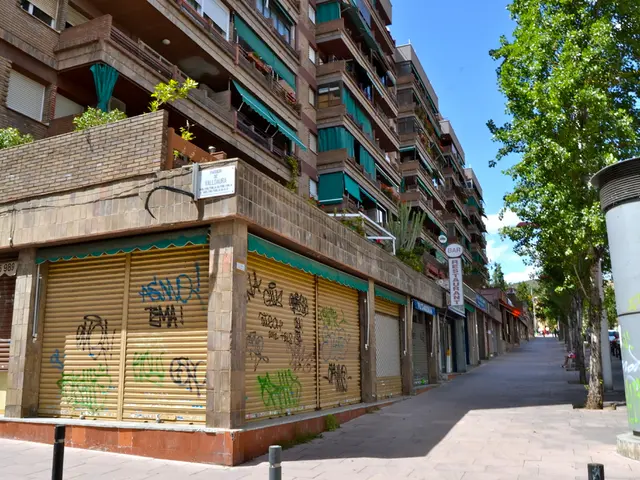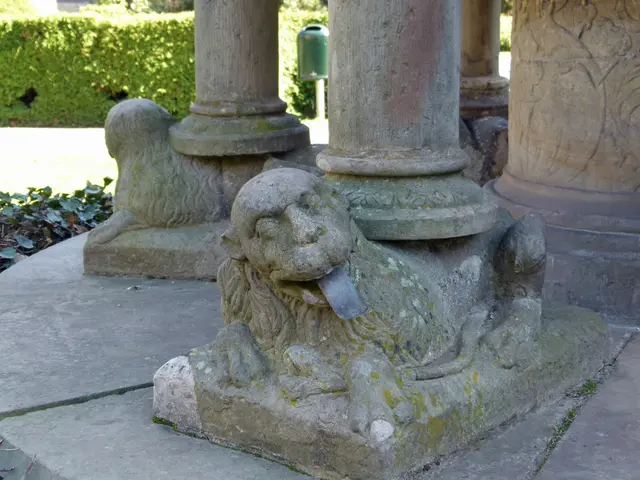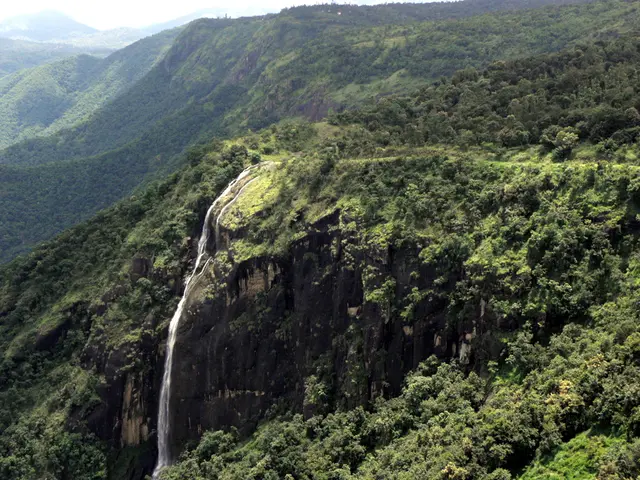Spain's Top 5 Rock-Carved Troglodyte Villages to Explore
In the heart of Spain, nestled within the rugged landscapes, lie a series of unique and captivating troglodyte villages. These ancient cave dwellings offer a glimpse into the past, showcasing human ingenuity and resilience in the face of challenging environments.
One such village is Cuevas del Almanzora, located in the province of Almería. This village is a prime example of Spain's troglodyte heritage, with some caves still inhabited and others transformed into museums or wine cellars. Cuevas del Almanzora was once a crossroads of trade, with caves serving as living quarters and storage areas for food and goods. Today, the municipality is showcasing its heritage with a tourist trail that highlights the village's rich history.
Guadix, a town a few kilometres from Granada, is home to one of Europe's largest groups of inhabited caves. Initially used as refuges against extreme weather conditions, these caves are now popular with locals and visitors seeking authenticity. Almost half the inhabitants of Guadix live in white dwellings with singular charm, recognized by their chimneys popping up from the hills like large mushrooms. The caves in Guadix are temperature-stable, providing coolness in summer and warmth in winter.
Setenil de las Bodegas, located in the province of Cádiz, is perhaps the most famous troglodyte village in Spain. The houses in Setenil are topped by huge hanging rocks, forming streets with a natural roof. Strolling through the winding white streets of Setenil and stopping at a bar beneath the rock is a unique fusion of architecture and nature. Visitors are drawn to Setenil by its uniqueness and to try the local cuisine, including traditional tapas and wines from the Sierra de Cádiz.
The village of Alhama de Granada, carved from cliffs, gives it a troglodyte identity. Its reputation is due in part to its thermal baths, inherited from the Romans and still in use today. Alhama de Granada is located on the edge of a deep ravine carved by the River Alhama.
Rojales, a village in the province of Alicante, has transformed its troglodyte caves into studios and galleries for artists and craftspeople. Each cave tells a different story, with its own paintings, sculptures, and handicrafts.
These troglodyte villages offer a unique insight into Spain's past and present, showcasing the resilience and creativity of its people. Whether you're seeking authenticity, natural beauty, or a taste of traditional Spanish culture, these villages are a must-visit destination.
Read also:
- Struggle for Wetlands, Wildlife Preservation, and Youth-Driven Conservation Movement Led by Matthew Vincent Tabilog in the Philippines
- Weekly proceedings in the German Federal Parliament (Bundestag)
- Upgraded Delights: A Comparison of Overcooked and Overcooked 2, Revealing 3 Enticing Enhancements Worth the Excitement
- Family vacation deals in the Mediterranean: inclusions of children-free vacations and enticing destinations like Crete, Sicily, and Barcelona






